#chinese box
Text
A very happy birthday to Maggie Cheung!
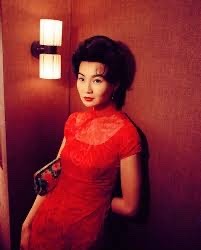
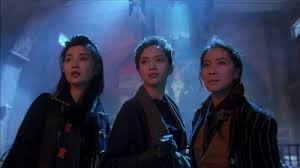
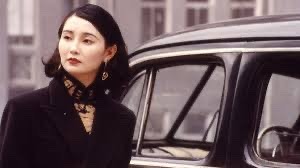

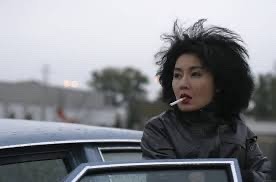
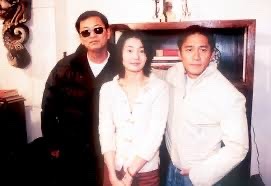




#maggie cheung#in the mood for love#the heroic trio#executioners#2046#clean#irma vep#police story#twin dragons#days of being wild#as tears goes by#ashes of time#Chinese box#hero#the romancing star#supercop#sausalito#the soong sisters#the eagle shooting heroes#new dragon gate inn#green snake#hong kong cinema#project a#the mad monk
10 notes
·
View notes
Text

0 notes
Text
Ming Dynasty Box That Sat In An Attic For Decades Sells For $358,000
— Jack Guy, CNN | Tuesday May 23, 2023

A 15th century Chinese box which went unnoticed for decades has sold for £288,000 (about $358,000), smashing its expected price at auction.
The box was bought for just £19 ($24) in 1946 and was expected to fetch between £6,000 and £10,000 ($7,400 and $12,400) when it went under the hammer last week, according to Dreweatts auctioneers.
The piece was created during the 1430s in the Imperial workshops near the Forbidden City in Beijing, auctioneers said. It bears the marks of Xuande, the fifth Emperor of the Ming Dynasty (1426-1435).
It is one of only five known in the world, according to the auctioneers, based in Berkshire, southern England. Three of the five pieces are in museums or institutional collections, Dreweatts added, and one is in a private collection.
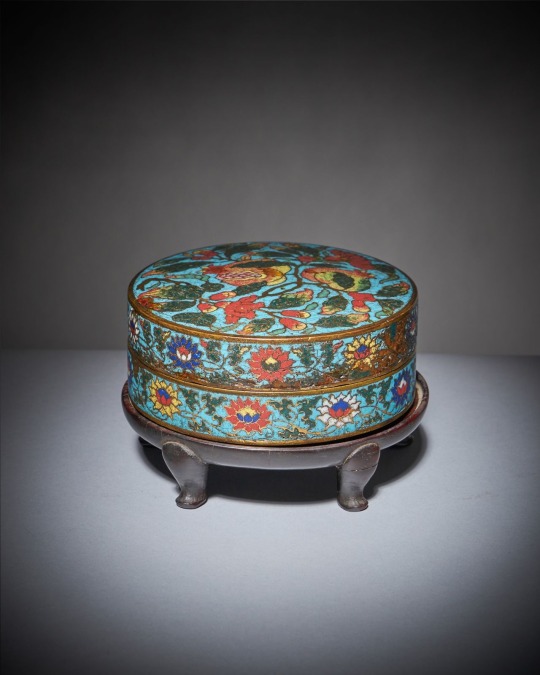
Pomegranates were a fertility symbol in 15th century China. Dreweatts
“When I first inspected the piece it looked too good to be true as 99.9% of Xuande marked pieces are later copies,” said Dreweatts expert Mark Newstead in a press release.
“It’s definitely a highlight of my career, I’ll probably never see anything as rare as this again, but never say never.”

The box features markings of Xuande, fifth Emperor of the Ming Dynasty. Dreweatts
Circular in shape and about 12 centimeters (4.7 inches) in diameter, the artifact features a design of ripe pomegranates, gold branches and blossoms. Pomegranates were a symbol of fertility in the 15th century, said the auctioneers.
This was the first time that the box had come to auction in 77 years after it was considered lost.
It was bought by Maj. Edward Copleston Radcliffe in 1946 and went unnoticed among less valuable pieces of his collection when he died in 1967.

This is the first time the box has appeared on the market in 77 years. Dreweatts
However, his family later sent the collection to Dreweatts, where specialists recognized its importance.
“Cloisonné enamel pieces from the early Ming period are exceptionally rare as production was strictly regulated by the Imperial Palace eunuchs,” Newstead said in a separate release.
Ming Dynasty encyclopedia sells for more than $9 million at auction -- 1,000 times the expected price
“The fact that it was discovered in a dust-filled cabinet in the attic of a family home amongst other less valuable pieces, where it had sat since its’ owners [sic] death in 1967 is extraordinary and we knew it would attract world-wide attention.”
Newstead said the auction, which took place on Thursday, saw “very strong” bidding between nine telephone bidders, with a private collector in Asia finally winning out.

The previous owner of the box, Maj. Edward Copleston Radcliffe. Radcliffe family
This is not the first time that a Ming Dynasty artifact has smashed its auction estimate.
In July 2020, two rare volumes of an ancient Chinese encyclopedia sold for more than €8 million ($9 million) at auction, more than 1,000 times the estimated price.
The encyclopedia, known as the Yongle Dadian, was originally commissioned by the Yongle Emperor, the third ruler of the Ming Dynasty, who reigned from 1402 to 1424.
0 notes
Text




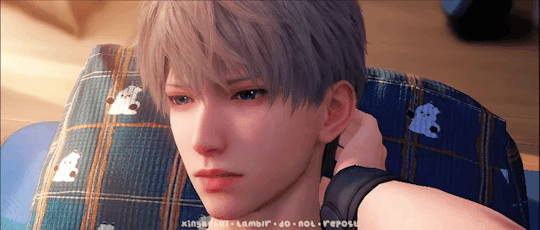
-----⋆⭒˚。⋆꒰☆ Faint Sensation 🍭
#love and deepspace#恋与深空#love and deep space#shen xinghui#沈星回#xavier#gamingedit#dailyvideogames#dailygaming#3d animation#video games#*4#otome#otome game#paper games#chinese game#a lovely user left me a comment in the tags saying my gifs were good 😭😭 and so i crawled out of my cave and made my first gif this month#dear lovely tumblr user who left the comment you may not even see this post but im thinking of you 💗#the pillow of the bunny with the boxing gloves!!! the nose rub!!!!!#and the short shorts i swear the shorts are much shorter here than in the biking
98 notes
·
View notes
Note
hi! do you have any information on how hanfu were traditionally washed and stored? thank you :)
First, sorry that it has been so long. Then, sorry that it is a short answer. Hope it is alright.
Expensive clothes were not washed. In the old days they used a lot of plant dyes and those things discoloured when they came in contact with water. Modern plant dyes are slightly better due to the fixative used in dying but the colour still faded with every wash. Hence, people in the old days used to wear layers to avoid dirtied their fancy clothes with sweat.
Clothes can be scented with something called 熏笼/Xūnlóng (lit. "smoke cage").

It is usually made from bamboo, but rich people could have them made from porcelain, like this one from the Three Kingdoms period.

A book on incense from the Song dynasty, 洪氏香谱/Hóng shì xiāngpǔ (Hong's Book of Fragrance), recorded the method of scenting clothes: first placed a bowl of hot water to moisturize the clothes, then smoke the clothes with incense.
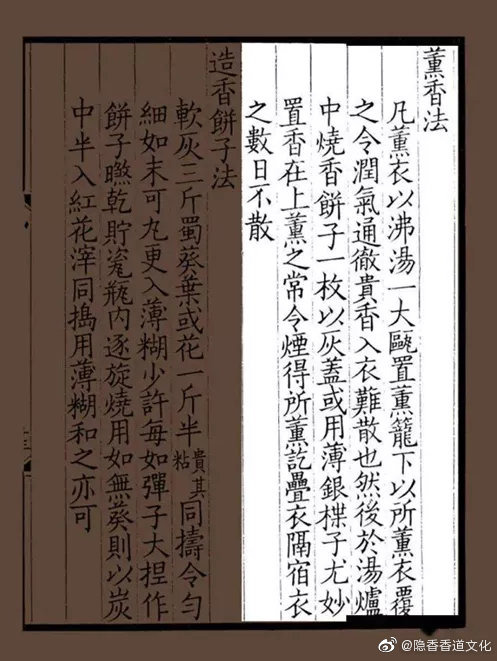
Sometimes clothes could be washed separately.
护领/Hùlǐng (lit. "Collar protector". They are usually white in colour) were often detachable so people only needed to wash that instead of the whole clothes. It could also be made from paper.
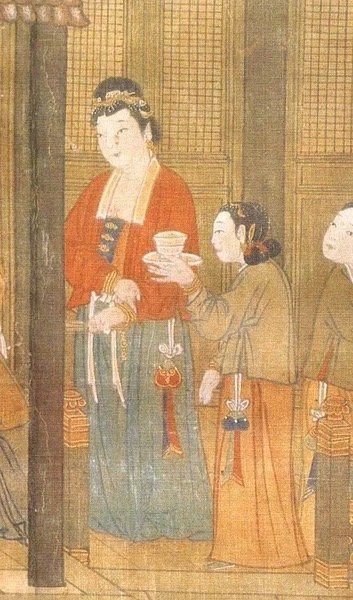
Those type of embroidered/painted collars from Song dynasty were attached separately, so it was possible that they were removed while the body of the clothes were washed separately.
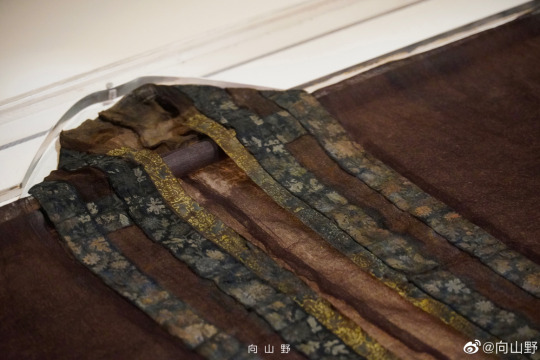
People usually washed clothes in water with the aid of a 捣衣杵/dǎoyī chǔ or 洗衣杵/xǐyī chǔ 搓衣板/cuō yī bǎn wash stick and/or a washboard.
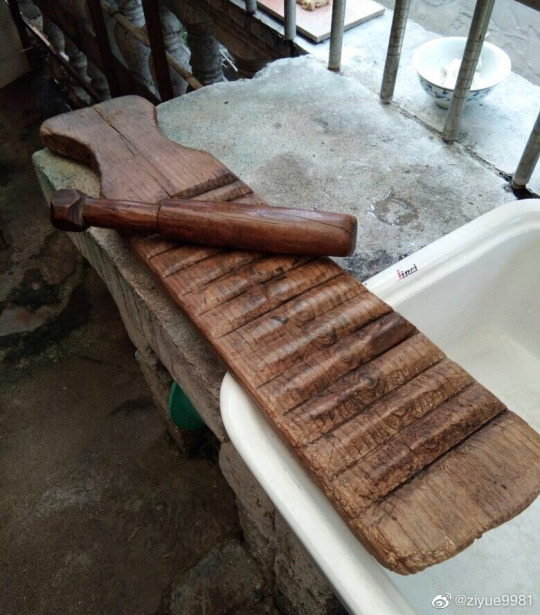
The earliest type of of soap recorded being used was 草木灰/cǎomù huī (wood ash). Other plant based soaps were also used, such as 皂荚/zàojiá (Gleditsia sinensis, black locust), 无患子/wúhuànzi (Sapindus saponaria, soapberries), 茶箍/chágū(the dregs from pressing oil from camellia seeds plus hay) etc.
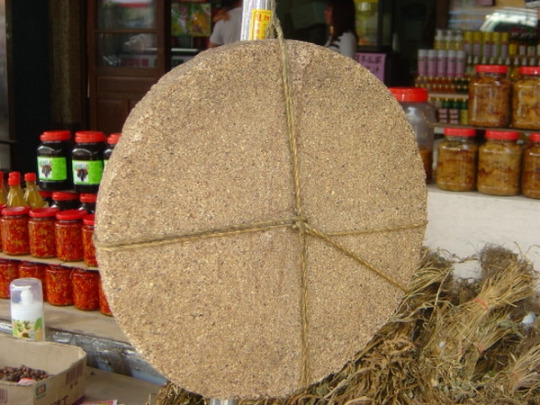
There were also records of potassium soap. Those soaps however were usually in liquid form and often used in fabric manufacture [我国古代的洗涤剂].
猪胰子/Zhū yízi Pig pancreas was also used. 白国斌/Bái Guóbīn (in 2021) wrote how they made pig pancreas soap when he was young - pasted the pig pancreas, then dried and powdered it. Later mix with alkaline water and made into ball to air dry.
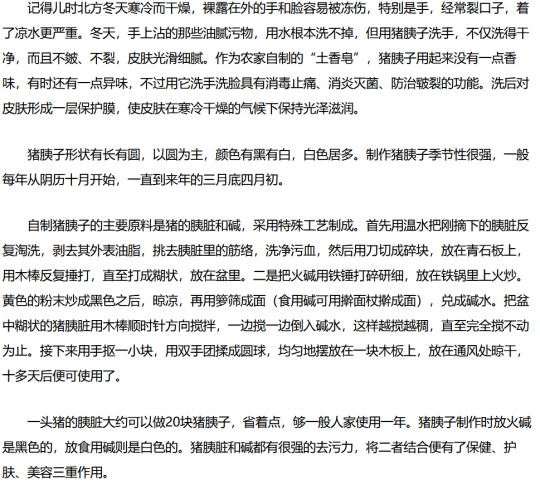
澡豆/Zǎodòu was made from the combination of powdered pig pancreas, bean powder and other herbs. There are many recipes, such as a recipe by 孙思邈/Sūn Sīmiǎo from Tang dynasty includes 16 materials. They were also known as 胰子/Yízi.
Aromatic herbs and other xiang (fragrant things) could also be added into the water in the end to add pleasant fragrance to the clothes, such as a book in Ming dynasty《多能鄙事》/Duō néng bǐ shì ("I can do a lot of humble things") by 刘基/Liú jī recorded: Tree Peony Bark 31.25g and Spikenard 3.125g, powdered.
#chinese history#hanfu#china#historical clothing#laundry#fouryearsofshades#long post#my ask box is finally cleared#i am free
857 notes
·
View notes
Text
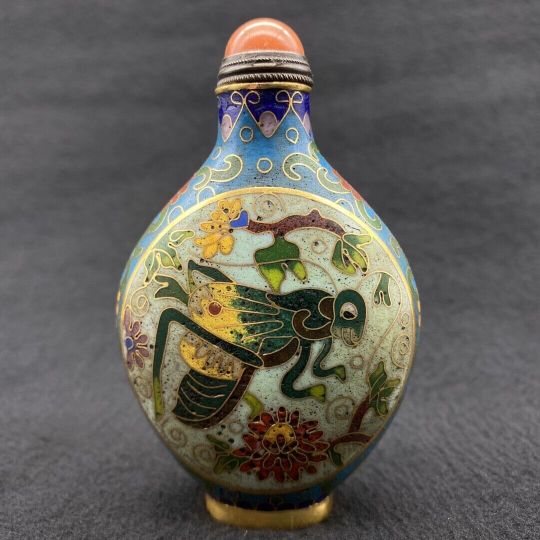



vintage peking vase painted chinese cloisonne snuff bottle box rare art enamel EBAY China Service First
58 notes
·
View notes
Text

Vegan Cauliflower Fried Rice Bento Box
#vegan#lunch#bento box#fried rice#cauliflower rice#cauliflower#bell peppers#onion#garlic#ginger#green onion#rice#soy sauce#chinese 5 spice#chili#avocado oil#black pepper#sea salt#strawberries#blackberries#pumpkin seeds#vegan yogurt
128 notes
·
View notes
Text


IG luxemagazine
#livingroom#luxury#velvet#animal print#chinese wardrobe cabinets#drapery#boxed valences#grasscloth wallpaper#interior design#lacquer
49 notes
·
View notes
Text
damn i thought lando was cooking smth
20 notes
·
View notes
Note
hi! I'm a big fan of your translations, thanks for sharing! I was wondering if you've ever done your own translations/interpretations of the names of the characters in mdzs?
hi!! ahh thank you! yes, I do have a (wip) post with my translations of character titles (eg cssr) and proper nouns in mdzs here! and I actually have been meaning to post an analysis of the mdzs surnames for a long time, so I'll use this ask to do so! thank you for reminding me!!
note: the characters are in traditional chinese :)
魏 Wei
this one is pretty self-explanatory for anyone who can read chinese. on the right is a 鬼 gui radical, which means ghost! for our lil 鬼道之王 king of the ghost path <3
(this radical also appears in a lot of words for "soul," such as 魂魄)
藍 Lan
I've often seen people simply say 藍 lan means "blue," and that wouldn't be wrong but it also wouldn't be completely correct. similar to how wwx clarifies that the 義 yi of 義城 yi city is not that of 俠義 heroic justice, but that of 義莊 coffin home, the in-universe definition from chapter 18 is that the lan surname is derived from 伽藍 qielan, which is a loan word from sanskrit, “saṃgharāma,” meaning buddhist monastery.
溫 Wen
溫 wen means temperature, warm. the wens do love their sun. pretty straightforward!
金 Jin
also straightforward. the jins are rich and opulent, and 金 jin means gold!
聶 Nie
here's where things get interesting. this is the one that made me think more about the surnames, and the reason why they're written in traditional here. I had always read nhs's name in simplified (聂) but when I saw it in traditional (聶), it clicked.
not only does 聶 nie mean "to whisper," but nhs has three 耳 ears in his name!!
AND INDEED, NHS HAS EARS EVERYWHERE, AND HE IS ALWAYS LISTENING. 👂👂👂
江 Jiang
this one I had to think about for a bit. of course, there's the most direct answer, which is that 江 jiang means river—and the jiang's are, of course, well known for their lotus pier and rivers and such. but a more interesting thought that occurred to me was that 江 may be a reference to 江湖 jianghu, aka rogue martial artist communities who aren't affiliated with mainstream society often seen in wuxia fantasy novels. those part of the jianghu do not adhere to government/law, but rather live under individual moral codes of conduct re righteousness, justice, vengeance, etc. quoting jeannette ng's essay on wuxia:
In Stateless Subjects: Chinese Martial Arts History and Postcolonial History, Petrus Liu translates jianghu as “stateless”, which further emphasizes that the hero’s rejection of and by the machineries of government. Jianghu is thus a world that rejects the dictates of the state in favor of divine virtue and reason, but also of a sense of self created through clan and community.
the jiang family precepts and ideals seem v aligned with this aspect of jianghu morality—after all, jc never lets us (or himself) forget that wwx's acts of vigilante heroism are those of an ideal jiang.
Bonus: 莫 Mo
mo xuanyu was only ever a blank canvas. 莫 mo means nothing, no one, none. </3
#also fun fact when I was looking up nie#I found out the guy who wrote the chinese national anthem is named 聶耳 nie er#he not only has 4 (FOUR!) ears in his name but his FIRST NAME IS LITERALLY JUST EAR#truly living up to his name. his parents must be so proud#anyway thanks for the ask anon this was fun!#ask box#anon#mdzs#mdzs meta#clans#surnames
192 notes
·
View notes
Text

I've been drinking elderberry and willow tea so much I forget how much I love oolong tea anwyahs hai
#i kinda just stopped drinking it#idk why tho i have like a years supply of it 😭#my mom was gifted this really big box of oolong from his lady who had a Chinese restaurant#it was pretty cool#to bad the nice lady retired</3#good for her but like </333#rambling#about oolong tea#i love tea#lobotomysbugaloogaart#sans doodle jumpscare
21 notes
·
View notes
Video
Sanda Training 🔥
316 notes
·
View notes
Text
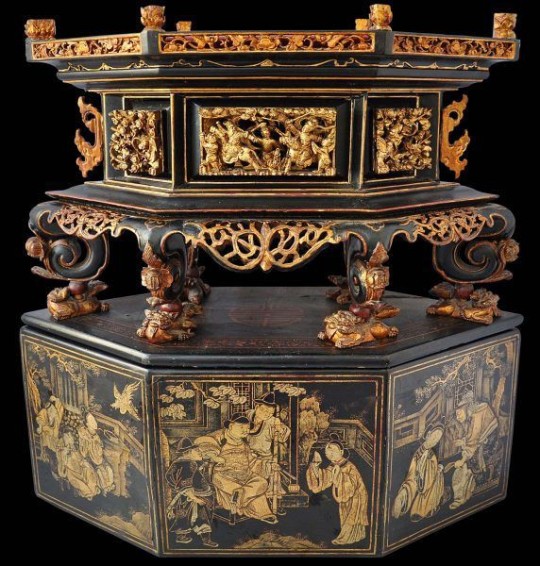
Gilded & Lacquered Wooden Offering Box (Chanab). China. 19th century.
25 notes
·
View notes
Text
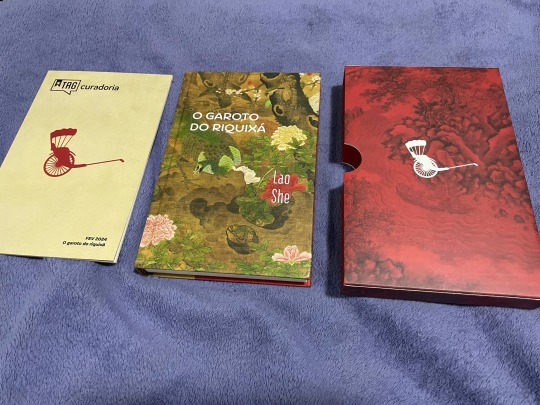

OKAY, I’M OBSESSED WITH THIS????
Brazilian edition of “Rickshaw Boy” by Lao She. Special edition from Tag Curadoria book box.
#dark academia#light academia#chaotic academia#romantic academia#adhd academia#dark academia aesthetic#bookblr#books#studyblr brazil#geogblr#chinese literature#book box#special books editions#bibliophile
21 notes
·
View notes
Text
I know this post is now several weeks late, but I just wanted to say: if the holidays are hard for you, it's ok.
Just because there's a societal celebration doesn't mean you have to suppress your feelings.
You're not required to be happy during Hanukkah, Christmas, Kwanzaa, Yule, Saturnalia, Boxing Day, Las Posadas, Ōmisoka, New Year's Eve/Day, Lunar New Year, or any other holiday. Your grief, your stress, your pain is real. And it deserves to be recognized. It doesn't magically go away just because of the time of year; you're allowed to need help!
Winter is actually pretty hard for a lot of people! Seasonal depression is real, and even if you don't experience that, I think everyone gets a little tired of the cold after the first few weeks.
The point is: it gets better. Springtime is just around the corner, and you won't have to deal with any of this for another 12 months. That in and of itself is worth celebrating!!You're doing amazing!
🖤💜💙💚💛
#holidays#christmas#hanukkah#chanukah#kwanzaa#yule#saturnalia#boxing day#las posadas#omisoka#new year's eve#new year's day#lunar new year#chinese new year
33 notes
·
View notes
